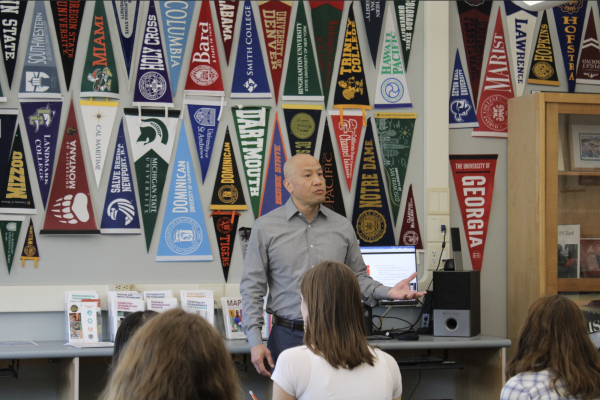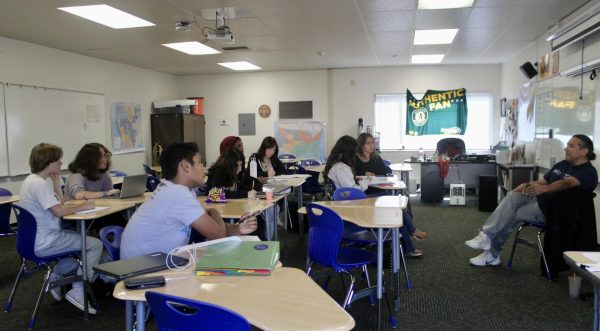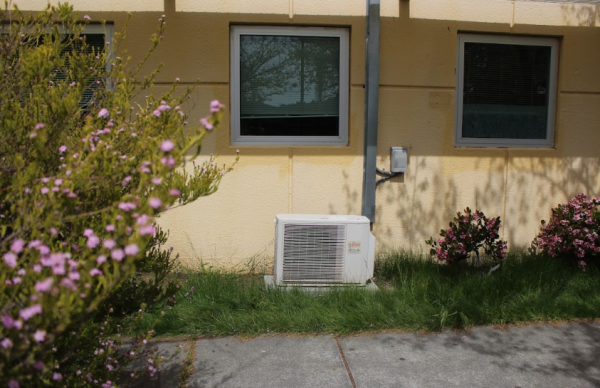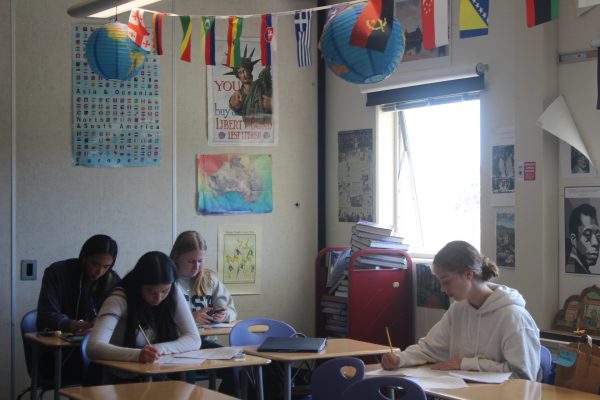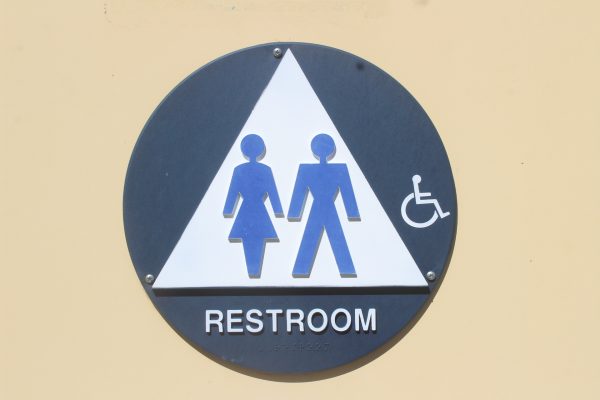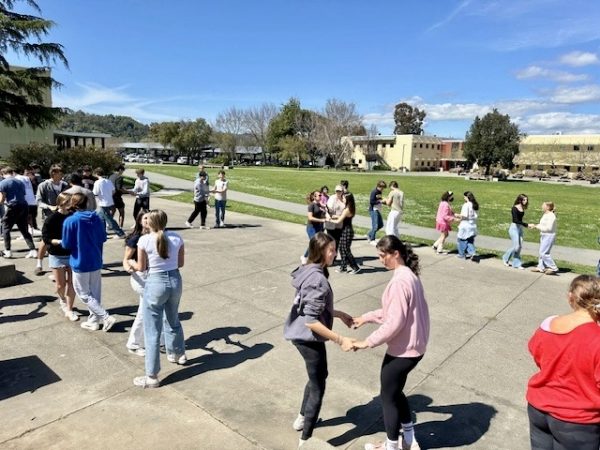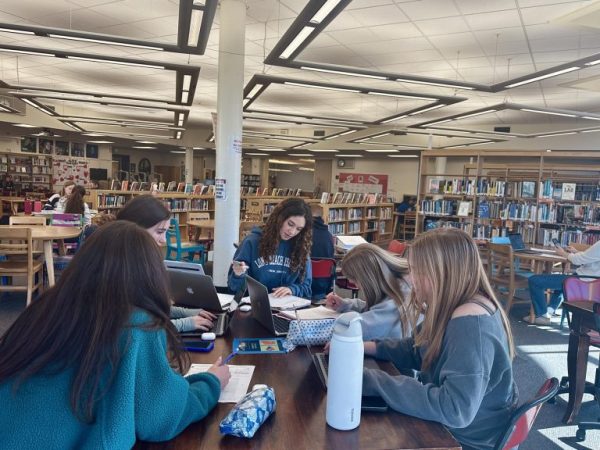San Rafael declares a climate emergency, fueling its sustainability efforts
October 27, 2021
Following the climate emergency declarations made by the cities of Tiburon, Fairfax, Novato, San Anselmo and Corte Madera, San Rafael announced a climate emergency on Sept. 21. In a unanimous vote, the San Rafael City Council voted in favor of the declaration. The city further discussed its plans regarding climate action at a community forum held on Oct. 21, which San Rafael holds quarterly. San Rafael previously took action to mitigate climate change, and the declaration ensures the city will continue to prioritize sustainability. With its addition, San Rafael will specifically align their policies with the state of California. For example, they are making sure their greenhouse gas emissions are reduced to 40 percent below the 1990 level by 2030, as outlined by the state.
San Rafael City Council member Eli Hill emphasizes that San Rafael has been taking steps to decrease greenhouse gas emissions for several years now. The city received the 2021 Beacon Spotlight award for achieving 27 percent greenhouse gas reductions.
“[San Rafael’s sustainability coordinator] recommended the council continue to do all the things that indicate we are taking real action and prioritizing our climate, so when we look at the time leading up to the declaration, we look at the priorities and goals the city has set,” Hill said.
San Rafael’s sustainability coordinator Cory Bytof also notes that the declaration has been in discussion for a few years now. According to Bytof, the recent declaration acknowledged and recommitted to climate action, using it to reset San Rafael’s long-term climate goal. California’s former governor Jerry Brown signed an executive order in 2018 pledging for the state to become carbon neutral by 2045. This goal was recognized in the San Rafael declaration.
In the Oct. 21 forum, Bytof noted that San Rafael is currently looking to adopt Senate Bill 1383, a new state law mandating composting edible food recovery from groceries and large restaurants. The city will have to buy back a certain amount of the compost created and find a use for it, such as repurposing the materials to prevent it from becoming waste. As of right now, the ordinance is being reviewed by San Rafael’s legal department.
Joe Stewart, a teacher of Advanced Placement (AP) environmental science and sustainable agriculture, says he would not be surprised if Larkspur also declared a climate emergency in the future, but is not sure that a city declaration will necessarily change things for an entity such as Redwood.
“I doubt school administrators will look at a declaration and say, ‘Oh look, they said it is an emergency; let’s change everything about the school.’ I think it is much more likely that the city would make a mandate [following the declaration] that the school would then follow,” Stewart said.
Pamela Reaves, co-chair of Marin Conservation League’s Climate Change Working Group, says the declaration can support those promoting climate change.
“It can add muscle to staff, activists and electors who want to put money towards projects that will do the most good for mitigation and adaptation because we are seriously in trouble [in terms of climate change],” Reaves said.
Reaves further mentioned that the declaration shows the development of San Rafael’s City Council in addressing the climate crisis.
“[The declaration] sets a tone that five years ago was not at all in the City Council. They used to say things like ‘That’s important, but we have these other things to take care of,’” Reaves said. “Now, the City Council has a Climate Action Plan for 2030 and holds quarterly community forums to implement the plan. [The council now sees] that the world is burning around us and we are in a drought. The sea level is rising.”
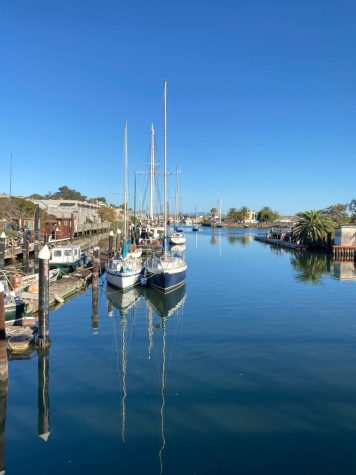
Reaves is particularly concerned about sea levels rising in the San Rafael Canal, the area east of Francisco Boulevard.
“That whole area is in danger if things are left as is. Housing and important industrial areas there will be lost, so decisions have to be made with people who live and work in the Canal area. It’s not like climate change is going to go away or the sea level will stop rising,” Reaves said.
Stewart and Hill both address the importance of education and comprehension of the issue in confronting climate change. Stewart finds education to be a useful tool in making a difference.
“I think that the environment, in particular, is a really important thing for us to be aware of, to understand and to try to support, especially with the fires that we’ve been facing and seeing increased flooding and other major events that are directly related to climate change around the world,” Stewart said.
Hill’s goals for San Rafael include ensuring that, as a community, San Rafael is as informed as possible.
“I am most moved by the impact [climate change] will have on future generations,” Hill said. “I hope that knowledge will guide our decision-making for ourselves and for our future generations and that we have the opportunity to be able to measurably make these changes.”








